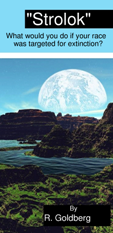 Whiteout uses the extreme cold of Antarctica to put a twist on the mystery thriller genre. U.S. Marshall Carrie Stetko (Kate Beckinsale) discovers a murder at the end of her last tour at a South Pole research station. If it's hard to find clues in the blizzard, imagine trying to hit your mark on the set.
Whiteout uses the extreme cold of Antarctica to put a twist on the mystery thriller genre. U.S. Marshall Carrie Stetko (Kate Beckinsale) discovers a murder at the end of her last tour at a South Pole research station. If it's hard to find clues in the blizzard, imagine trying to hit your mark on the set.
"In terms of being challenging, coming out of the trailer that very first day, I really was worried I wasn't going to be able to speak at all, or say a line ever," Beckinsale said at a press conference on Aug. 28 in Beverly Hills, Calif. "My whole throat closed on that first breath. Luckily, Gabriel [Macht] told me to keep my passages open. Aside from that, the cold was really great. It was probably worse in the studio with the heat. Trying to stop [co-star] Columbus [Short] from sweating was the biggest challenge there."
Macht plays U.N. investigator Robert Pryce, joining the investigation with Stetko. He's also out in the snow in heavy winter gear, which is fine for exteriors, not so much under studio lights. "The challenges that we came up against were when we shot in the studio," Macht said during the press conference. "We were in 80-degree weather, in late spring/early summer, and we were having to wear extreme weather gear. It was probably the hottest set I've ever been on, so I was sweating bullets and probably lost 35 pounds by the end of the movie."
Manitoba, Canada, doubled for the South Pole. Don't make light of shooting in Canada. The actors had to be just as prepared for freezing temperatures when they shot outside. Beckinsale recalled the frightening safety manual.
"When we arrived, they put a thick telephone directory under our hotel room doors the night before we started shooting," she said. "That said, 'These are all the different ways it's possible to die here: of being too cold or of being too hot, if you keep your clothes on too long, when you go inside, or if you've ever had an alcoholic drink, or if you breathe in a westerly direction.' We all panicked. The most I remember was putting on and taking off 15 layers of clothes about 70 times a day. When we first went out, all the men had beards full of ice that I thought were makeup department tests, but it wasn't. It was real. And my hair froze into a point just from breathing on it. I thought, 'Well, I'm from England, I'll know how to handle the cold,' and it wasn't anything like that."
All bundled up, Macht toughed out the cold just fine. "My experience in Manitoba was that it was definitely freezing, and the environment was as close to the [Antarctic] environment as I would think is possible," he said. "But we were in extreme weather and I wasn't that cold. The stuff they got us to wear was very warm. I was fine, and I expected it to be a lot worse."
Producer Joel Silver chose Manitoba for its harsh conditions, but they weren't so harsh that he could not control it. Having learned his lesson from shooting in real snow back on Die Hard 2: Die Harder, Silver utilized modern-day visual effects to enhance location footage. Even creating the whiteouts, where fierce snow blocks visibility beyond a few feet, required digital trickery.
"Some of the way that we did the whiteouts couldn't have been done except for the CGI today," Silver said during the press conference. "You couldn't shoot in that situation. You couldn't possibly shoot in an environment like that. We were able to make it where you can actually see the people, but you sense that you really can't see anything else. With this, we did have some harsh environments, but a lot of that was created in a way that you could believe what you were seeing. There was verisimilitude. We did augment a lot of the climate and weather with visual effects, which makes it harsher than it really was. It was cold, and we were shooting on a frozen lake bed, [but] it wasn't treacherous. The ice was many, many feet deep."
Whiteout opens Sept. 11.
sci-fi wire...
 If you're a fan of the Brit walking-with-dinosaurs sci-fi adventure series Primeval, you're in luck: Three months after ITV canceled the show, BBC America and U.K. pay channel UKTV are rescuing it from extinction.
If you're a fan of the Brit walking-with-dinosaurs sci-fi adventure series Primeval, you're in luck: Three months after ITV canceled the show, BBC America and U.K. pay channel UKTV are rescuing it from extinction. 






































